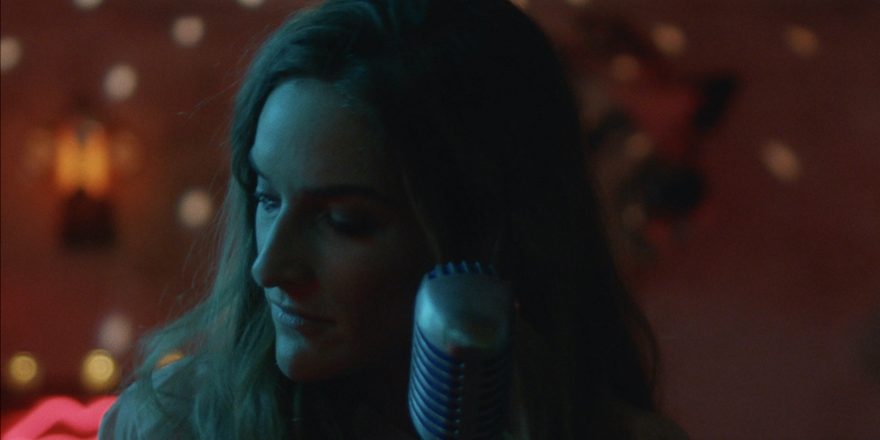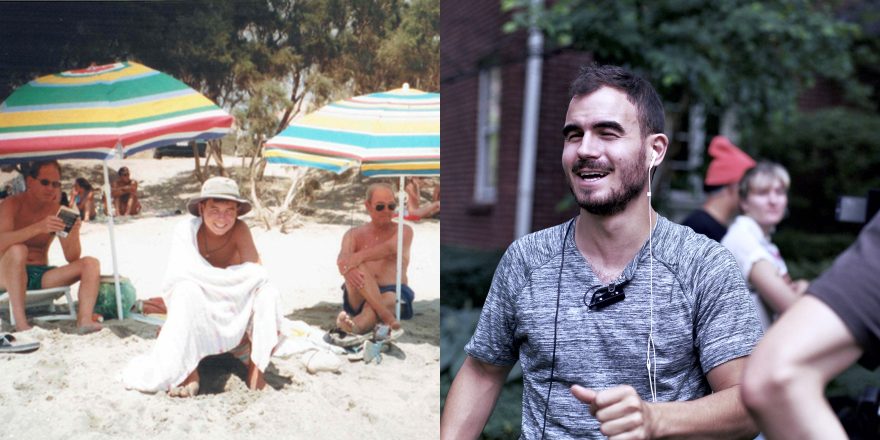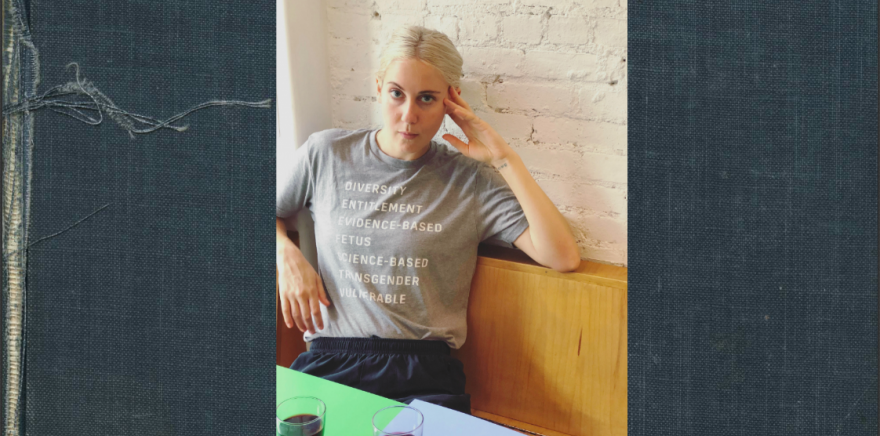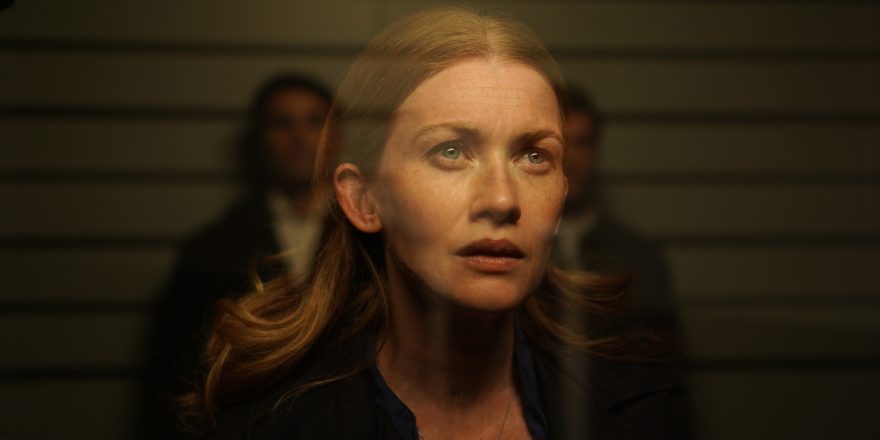OK, before you click away because of all that “mind, body, spirit” talk, I hear you. I used to feel the same way. I suffered from bulimia for more than half my life, so I was never living in my body, and I’d given up on my spirit a while ago. I’d merely suffered too long. But I knew my mind well (a little too well), as it’s where I used to live most of the time, spinning around with my ol’ pals Fear and Self-Hatred. It wasn’t until I stopped believing everything my mind said, got in my body and believed that I am a spiritual being in a human body, that I really began to heal from my eating disorder. Let me tell you the real story about a girl who lost her voice to bulimia, only to rediscover it and heal herself by making a movie about it called Shapeless.
I have a four-and-half-year-old daughter, Fallon, who is fierce, vibrant, creative, wise and present. Recently, she’s begun to ask lots of existential questions like, “What is heaven?”, “What is expectation?” and “What does ‘Go with the flow’ mean?” Whenever she does, I pause, try to tune in, but right before it comes to me, I hear that doubting, critical voice that says, “Don’t screw this up for her.”

I always want to say the right thing, to have the perfect answer and be the perfect parent. But, of course, I can’t, and that’s the hardest part of it all. Because we can’t control everything. Believe me, I’ve tried. In fact, I tried to control everything so much that it manifested in me becoming bulimic at age 14.
The idea of Control and Perfection can be enticing. After all, Fear is a good motivator. Maybe someone told you “You’re too emotional” enough times as a kid that you started to feel like it was true. Then Control and Perfection waltz in promising Safety and Love, and you believe them. So, you contort, conform and perfect in order to keep the peace, while you keep an air-tight lid on your emotions. You control yourself, your appearance, your environment and you (try to) control others – all in an effort to feel safe. You trap yourself in your own pressure cooker.
Then, ever so gently, a new voice subtly creeps in, promising relief. A voice that seduces you into believing that the answer is more control. And you fall for it, just one time. And then another. And another. Before you know it, you’ve been trapped by the monster within: an eating disorder. It takes over. You binge and purge and you finally feel relief, albeit brief, but you tell yourself you’re not that sick, because you’re going to try to control this, too! Control feels safer than facing your feelings or burdening someone else with them. Shame keeps you stuck living in your mind with an uncontrollable monster who claims constant war on your body and spirit. The cycle continues. When you believe Control equals Safety, and Perfection equals Love, the cycle will most definitely continue.
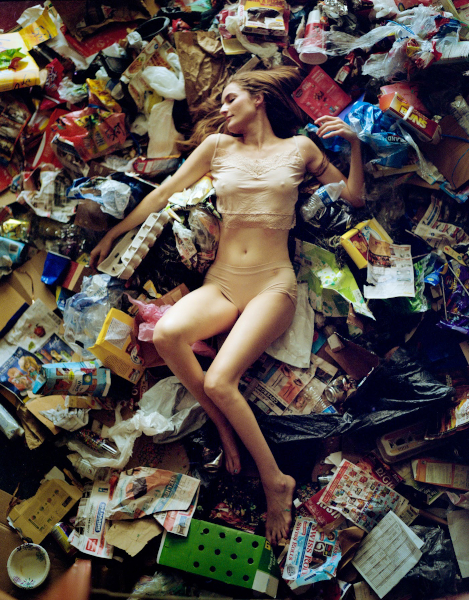
That’s how it felt in my experience of having an eating disorder. It’s also something I’ll be in recovery from for the rest of my life. It still feels like words fall short in describing the exacting grip an eating disorder can take, which is why I felt called to bring a story to screen that could embody the experience of struggling with such a complex and serious illness from which so many suffer. Eating disorders affect all people, regardless of weight, age, race, socioeconomic background, cultural background or gender identity, and they have the second highest mortality rate of any psychiatric condition, behind opioid addiction. Addiction and eating disorders can be really hard to talk about, and I believe in the normalization of conversations about all the things that are hard to talk about in life and think film can provide one of the most effective gateways for those conversations.
Shapeless is about Ivy, a struggling singer in New Orleans trapped in the hidden underworld of bulimia, who must face her addiction or risk becoming a monster. Birthed from my personal experience of losing my voice to bulimia, it’s an authentic, empathetic portrayal of someone struggling with an eating disorder, told in a surreal way. Before I was an actor or writer, I was a singer. My ability to sing was the one thing I knew I loved about myself from a young age. Even in high school, when I developed depression, anxiety and then ultimately bulimia, I could still always count on my singing as something I could love about myself. Singing was my respite, music my haven.
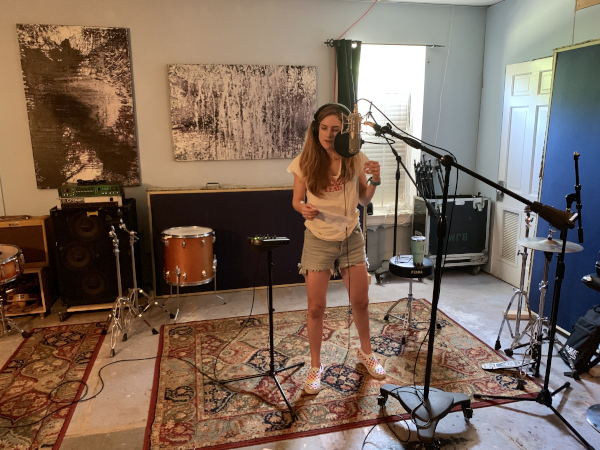
Shame led me to still be struggling in silence with bulimia when I transitioned to college. It was hard. In an effort to feel better, I signed up for voice lessons during my senior year. It didn’t go well. Warming up, I failed to hold and hit notes, and I had almost no breath control. Only five minutes in, the teacher recommended I get my vocal cords checked.
Somehow, I went to a doctor, perhaps hoping for some other answer than the truth I was about to face. After a laryngoscopy, the doctor showed me footage of my ravaged vocal cords. He asked with gentleness and with (what I thought to be) a knowing look, “Do you suffer from acid reflux?” I physically couldn’t speak. Unable to face the truth, I dove deeper into illness. And no matter how hard I tried, I couldn’t stop throwing up.
The shame I experienced from “ruining” the one thing I loved about myself was all-consuming, but I buried it deep down. I stopped singing. The hateful soundtrack in my head became the only thing I listened to, because listening to music was too painful. I dove even deeper into bulimia, seeking comfort from the unbearable pain. The cycle continued. Eventually, thankfully, I made my way to treatment, which I was very fortunate to go to since I was still on my parents’ health insurance. I found healing there, as I felt the power of shared experience, of not feeling alone. It is also where I first had the idea for Shapeless, almost 12 years ago.
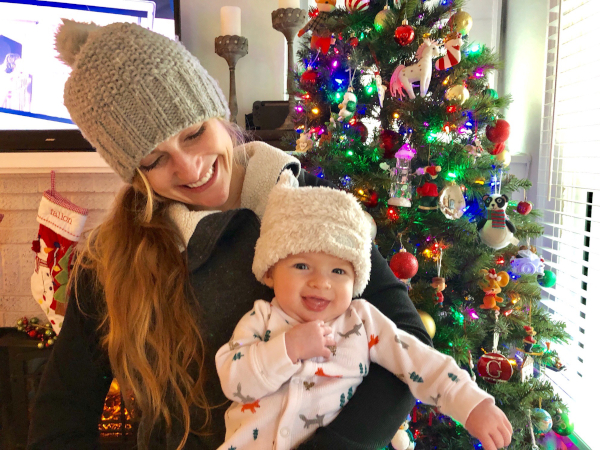
I first felt safe being vulnerable about my experience in treatment and the idea for my story when I was dating Bobby Gilchrist, (my ex-husband, wonderful co-parent, talented actor and producer on Shapeless). He was the first person besides me to believe in the story and what it could do. But it was hard for me to write, to get that uncomfortable and that vulnerable. The frequent relapses didn’t help. When I got pregnant, elation and (perhaps even more) panic flooded over me. My life felt out of control, and now my body was too. It was then that I felt called to learn how to meditate. I had tried thinking my way through this whole life thing, so maybe it was time to try a different approach. Miraculously, the first time I meditated, I felt the teensiest, briefest moment of deep peace. I’d clung so tightly to my thoughts and feelings, I thought they were me. But now I encountered something underneath the constant chatter: My soul. I was hooked.
It was in that space that I felt a reconnection to my spirit, and I wanted more. I began meditating every day, listening to anything that sounded interesting on the meditation app Insight Timer. The ones I most deeply connected to had a sound-healing element to them, with solfeggio healing frequencies or binaural beats. I healed there. I felt love there. I began questioning that nasty, self-flagellating voice in my head beating me up for not being perfect, and began affirming that I deserved to love myself. Even if it didn’t feel like I deserved it, I let the music just feel good without questioning why it did. I allowed music to heal my deepest wounds.
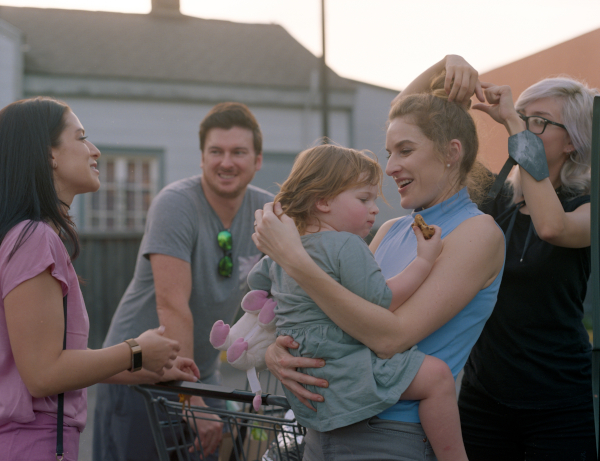
It wasn’t until Fallon was born that I felt brave enough to finally face myself and write. When she was four months old, I remember holding her in my arms not only feeling immense, unconditional love, but also utter terror. How could I save her from going through what I went through? The answer was to be honest and vulnerable, and to finally write a first draft of a story I’d thought of long ago. Thankfully, that first draft caught the interest of Samantha Aldana, who ultimately became the director of Shapeless.
In those early stages of development, my writing was informed by the very vulnerable, honest and oftentimes uncomfortable conversations which Sam and I shared about my experience. After a few drafts, though, I realized Shapeless was something I couldn’t write alone. I have the utmost gratitude for Sam and my co-writer, Bryce Parsons-Twesten, who treated me and the subject matter with so much care and curiosity, and in such a safe and supported way.
We kept talking, and as each new collaborator came on board, we would have our own uncomfortable yet healing conversations about feelings, which were what guided us on Shapeless. I was lucky enough to work with kind, non-judgmental collaborators, some of whom had first-hand experiences with eating disorders. Through those conversations, not only did I feel my shame lessen, but I also began to recognize a universality to my experience. Shame and self-loathing, regardless of how they manifest, are emotions we all have. Conversation by conversation, I felt the power of vulnerability and honesty diminish my shame and heal me.
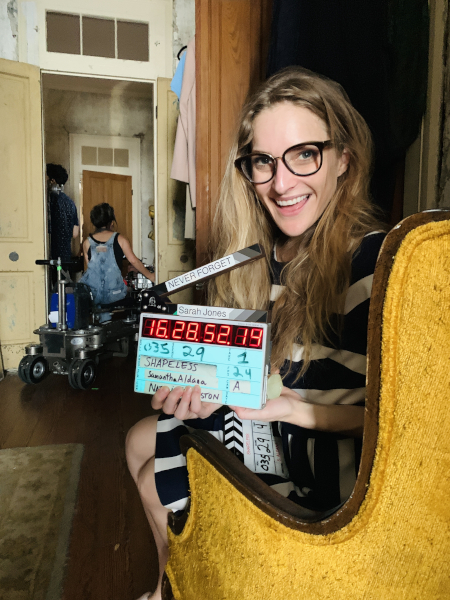
When the time finally came to record my character Ivy’s songs for Shapeless, it hit me like a ton of bricks. “Well, shit,” I remember saying out loud. I was terrified. Sam recommended I meet with fellow actor and voice therapist Caroline Fourmy. I had countless limiting beliefs surrounding my singing voice because of the shame I was still carrying about “ruining” it with bulimia. With care and compassion, though, Caroline guided me. We would do vocal exercises lying on the floor, where we would intentionally sing badly to help get me out of my own way. That way, I could stop worrying about being perfect and just allow myself to sing.
When I sang, I got in my body. I breathed, wailed, cried, screamed. I opened the rusty gates to all the feelings I’d dammed up, and let them rage. My singing voice didn’t sound like what it used to. I needed to breathe a lot, and I couldn’t hit very high notes, but I could still sing. And it felt good. I began listening to music again. And that felt good, too. So good. Music felt like home.
Each song became a prayer, a baby step in replacing that outdated soundtrack of self-hatred with something new. Did you know that when you sing, your body releases oxytocin and endorphins to trigger happiness in your brain?! It also takes a lot of mental focus, so when you sing, your brain focuses only on that one task, which causes anxiety to float away. Music is magic, and I’m living proof. I’ve even started singing duets live, on stage, with real musicians in New Orleans, as well as writing my own music. An absolute miracle.
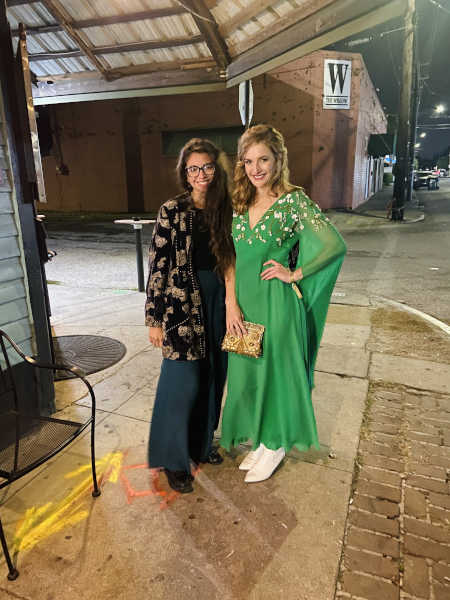
One breath at a time, Shapeless helped me reconnect to my spirit. When I trusted I had that space of love and infinity inside of me and so did everyone else and we were all connected, that was when I felt my eating disorder finally loosen its grip. The more I believed in my spirit, the more I could live in my body and question my mind. I am forever thankful to Shapeless for bringing music, the language of my soul, back into my life. In making a movie about a girl losing her voice, I rediscovered my own.
Shapeless is my high lonesome and I hope it can be someone else’s, too. I hope it serves as a window of empathy for those who haven’t experienced an eating disorder, while providing a sense of being seen, heard and understood for those who have. Where words can fall short in describing the depths of darkness of an eating disorder, I hope Shapeless allows someone who struggles to say, “That. That is what it feels like.”
When Fallon asks me what “go with the flow” means, I take a breath and say, “It’s different for everyone, but I think it means that no matter what happens to you, no matter what feeling you feel or thought you think, you’re always OK. Because you aren’t the things that happen to you or your thoughts or feelings. You are made of love, the most powerful thing in the Universe. It’s safe for you to let go of control and experience the present moment, and just go with it.” She listens, but doesn’t say anything. She quickly resumes playing our game where we pretend to be penguins who save the world with our trusty “arctic fox” sidekick (our dog, Maple). I tell that chastising voice in my head to shut up, take a breath, and start playing penguins again too. I think we got it.
Recovering from an eating disorder is hard, but accessing treatment shouldn’t be, especially when you’re struggling. If you or someone you know is struggling to access eating disorder treatment, head to www.theprojectheal.org for more information and resources in how they are breaking down the systemic, financial and healthcare barriers to eating disorder treatment. Please consider donating and share if you can, thank you!


